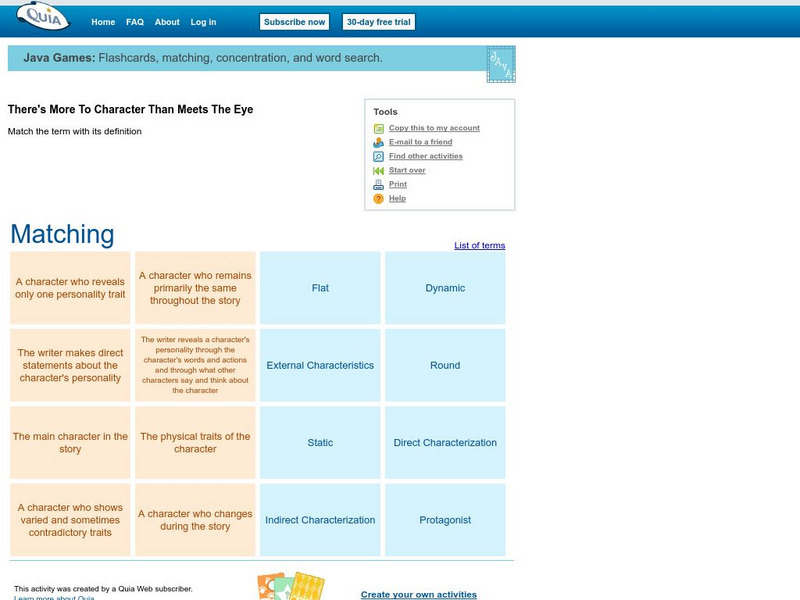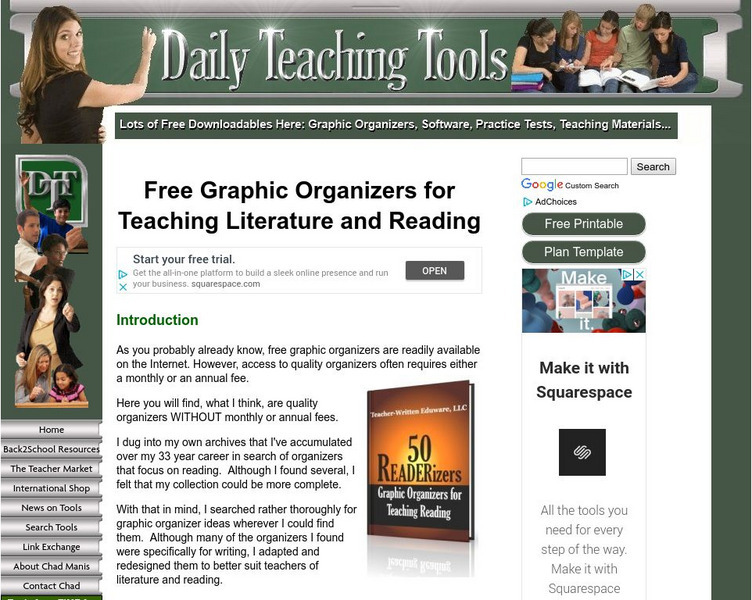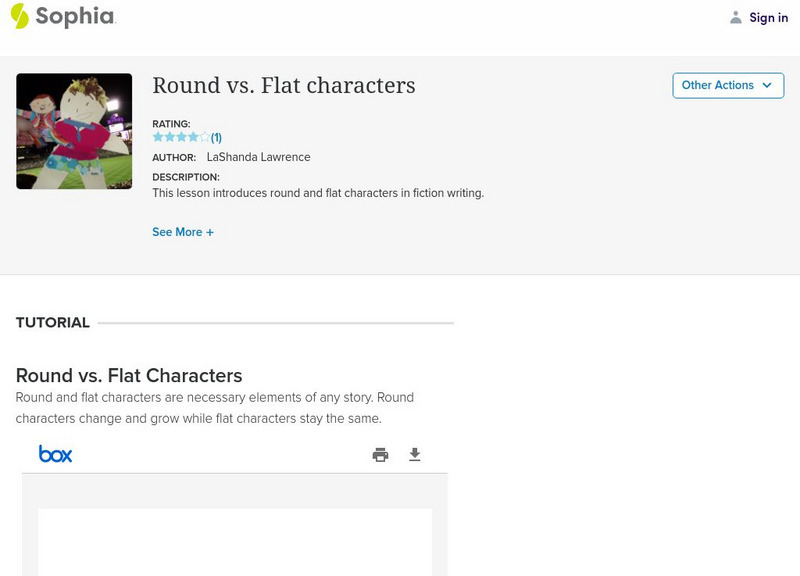Alabama Learning Exchange
Alex: Character Web With Dust Tracks on a Road
Students will read "The Inside Search," from Dust Tracks on a Road with a partner creating a character web.
Alabama Learning Exchange
Alex: And Then There Were None: Casting the Characters
Students will work in pairs to cast their own movie version of the novel. Students must have a knowledge of the characters and setting from the novel. Casting of the characters must correlate with the character traits mentioned in the book.
Alabama Learning Exchange
Alex: Analyzing Characters in 12 Angry Men
Re-telling a story from the points of view of its various characters is a powerful way to review the events of a story, show how authors use characterization to reveal characters' personalities, and encourage students to view stories...
Alabama Learning Exchange
Alex: Examining Character Motivation
During this unit, students will ask "Why do we do what we do?" They will read different novels to analyze character motivation. Throughout the unit they will debate whether they think characters made smart choices and why. They will also...
Alabama Learning Exchange
Alex: Of Mice and Men
This is a technology-based group project. It requires students to use the Internet as well as various types of software to creatively display their knowledge of the novel, Of Mice and Men.
British Library
British Library: Discovering Literature: Eve in Milton's Paradise Lost: Poignancy and Paradox
Eve in Paradise Lost is vainly vulnerable and evidently intellectually inferior to Adam. However, Sandra M Gilbert argues that, though Milton portrays her as a weak character, he also puts her on a par with Satan in her refusal to accept...
British Library
British Library: Teaching Resources: Aphra Behn, the Rover: Carnival
These activities allow students to explore how Aphra Behn uses character types and tropes associated with carnival in "The Rover". Students can relate this to the play's context of production, and comic theories relating to the...
British Library
British Library: Teaching Resources: Macbeth: Lady Macbeth
This varied series of activities is designed to encourage learners to exercise independence of thought when exploring the presentation of Lady Macbeth throughout the play. The tasks draw learners' attention to the varied ways in which...
British Library
British Library: Teaching Resources: Othello: Critical Approaches
This activity allows students to consider how different critical approaches can influence a reading of the play. Students will work in groups to explore different attitudes to Othello by looking at a range of texts from the past,...
British Library
British Library: Teaching Resources: Much Ado About Nothing: Comedy and Tragedy
Engaging with these sources will encourage students to examine the way Shakespeare approached his work, as well as examples of contemporary texts with similar themes, some of which are challenging. Included are discussion questions,...
British Library
British Library: Teaching Resources: Measure for Measure: A Problem Play?
What is Measure for Measure's problem? The play confronts us with questions about sex, morality, and power, which challenge us as readers and audiences. In these activities, students will debate why the play is so problematic, through...
Ted Nellen
Cyber English (By Ted Nellen): Literary Terms a E
The first of three pages of simple definitions for literary terms. This page, A - E, covers forty-four terms from "Allegory" to "Exposition."
Other
Frog Fables and Parables
All these fables feature frogs as their main characters. Like all fables, they each have a message about life.
Quia
Quia: There's More to Character Than Meets the Eye
Twenty flashcards with character vocabulary words and their definitions.
Quia
Quia: There's More to Character Than Meets the Eye
Play a matching game by joining each type of character with its definition.
Quia
Quia: Character Terms
Complete each sentence by typing the correct character word into each box in this ten-question quiz.
Austin Independent School District
Austin Independent School District: Character Frame [Pdf]
A graphic organizer designed to help students understand characterization by visualizing a character and describing that character's actions and feelings throughout a story.
Daily Teaching Tools
Daily Teaching Tools: Customizable Graphic Organizers
This Daily Teaching Tools resource provides a series of graphic organizers for reading students. Forms are provided for plot, character analysis, reading logs, and reading responses.
ReadWriteThink
Read Write Think: Character Map
Help students analyze a particular character with this character map that helps them examine character appearance, actions, and how others respond to them. Ideas for its use are provided.
Houghton Mifflin Harcourt
Holt, Rinehart and Winston: Elements of Literature: Determining Methods of Characterization [Pdf]
A brief organizer in which students can document how a character in literature is presented, through either direct or indirect characterization. Provides labels, examples, and sections for textual support.
Sophia Learning
Sophia: Analyzing Characterization
This lesson introduces the elements of character analysis and uses Poe's "Tell Tale Heart" for an example. RL.9-10.3 Analyzing Characters
Sophia Learning
Sophia: Round vs. Flat Characters
This slideshow lesson introduces and defines round and flat characters in fiction writing.
Fun Trivia
Fun Trivia: Short Story Elements Trivia Quiz
This site shares a short story elements trivia game. Examples of short story elements are applied to high school classic literature.
EL Education
El Education: Kurare
After researching slavery and personal experiences of slaves with primary and secondary resources, students create a fictional character that is historically and geographically accurate. Character files include a portrait, a narrative...













![Holt, Rinehart and Winston: Elements of Literature: Determining Methods of Characterization [Pdf] Graphic Holt, Rinehart and Winston: Elements of Literature: Determining Methods of Characterization [Pdf] Graphic](http://lessonplanet.com/content/resources/thumbnails/410109/large/bwluav9tywdpy2symdiwmduymc0ymjy4mc0xz3pvamf3lmpwzw.jpg?1589985471)



